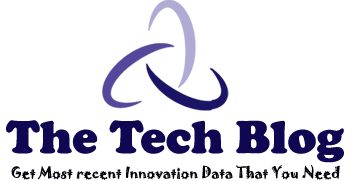Enhancing Workplace Safety and Efficiency With Strategic DART Rate Management
By: Langdon Dement, Global EHS Advisor, Evotix
Modern businesses actively link performance with health and safety, recognizing their integrated connection. The days away, restricted or transferred (DART) rate is a pivotal metric for companies committed to excellence in all three areas. However, before delving deeper, let’s define the DART rate.
The DART rate is an Occupational Safety and Health Administration (OSHA) established safety metric that quantifies workplace injuries and illnesses requiring employees to take time off, work under restrictions or be reassigned. This metric is crucial to workplace safety and health efficacy, reflecting how well a company protects its employees from harm. A lower DART rate often indicates a safer, more attentive work environment, while a higher rate can signal the need for improvements in safety protocols and measures.
The DART rate provides invaluable insights into necessary areas for enhancement. From identifying the need for improved safety equipment and training to revealing the necessity for ergonomic adjustments and flexible job designs, analyzing the DART rate is a strategic tool that promotes a healthier and safer workplace, supports employee morale and streamlines operations.
Now that we’ve established the DART rate, let’s explore its significance further. Why is this metric so critical for businesses?
Table of Contents
Elevating Business Performance Through DART Rate Analysis
Understanding the DART rate’s nuances allows businesses to identify specific areas needing improvement. For instance, a high number of days an employee is away might indicate a need for better safety equipment or training. In contrast, extensive transfers or restrictions might point to ergonomic issues or the need for more flexible job designs. By addressing these issues, businesses enhance health and safety, optimize workflows and boost employee engagement.
Proactive Measures Driven by DART Rate Insights
A detailed analysis of the DART rate empowers businesses to take proactive measures. This includes conducting regular risk assessments, revising safety protocols, investing in employee training programs and adopting new EHS&S technologies that enhance safety monitoring and incident reporting. By being proactive, companies can anticipate and address potential issues before they escalate into more severe health and safety incidents.
Benchmarking for Continuous Improvement
Regularly benchmarking against industry standards helps businesses understand their position in terms of health and safety performance. This benchmarking should be an ongoing process, adapting to industry practices and regulation changes. By continuously striving to meet or exceed these benchmarks, companies can remain at the forefront of health, safety and operational excellence.
The Role of Leadership in Safety Performance
Leadership plays a crucial role in driving health and safety within an organization. Leaders must demonstrate a commitment to health and safety, ensuring it is a core value within the company. This includes allocating resources for safety initiatives, setting clear safety goals and leading by example. A leadership team that prioritizes safety inspires a similar mindset throughout the organization, leading to a safer, more productive workplace.
Integrating Safety into Business Strategy
Integrating safety metrics like the DART rate into the broader business strategy is essential for sustainable business growth. This integration ensures that businesses view health and safety not as an isolated element but as integral to their overall performance and success. By aligning safety objectives with business goals, companies can create a balanced approach that promotes operational excellence and a healthy and safe working environment.
Future Directions: Advancing Safety Metrics Beyond DART Rate
While the DART rate is a critical metric, it’s essential for businesses to continuously explore new health and safety metrics and technologies. Innovations in safety management, such as all-in-one EHS&S platforms offer opportunities to further enhance workplace safety. The software can help businesses identify potential incidents before they occur, allowing for even more effective prevention strategies.
Embracing DART Rate for a Safer, More Efficient Future
The DART rate is more than just a compliance requirement; it is an indispensable tool for assessing and improving a company’s health and safety record and operational effectiveness. By fully understanding the implications of the DART rate, businesses can create a healthier and safer work environment and enhance their operational efficiency, financial performance and reputation for long-term success.
Are you ready to make the DART rate a cornerstone of your business strategy and health and safety protocols? To learn how to implement a health and safety management system, download Evotix’s toolkit here.


